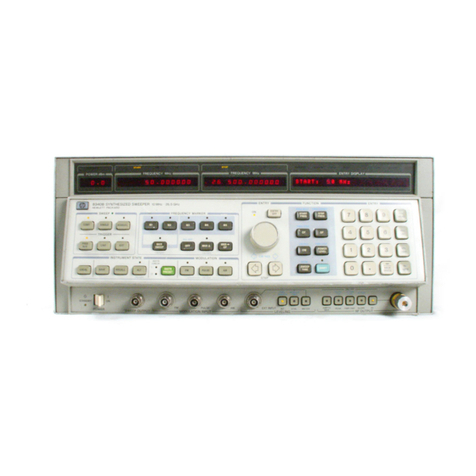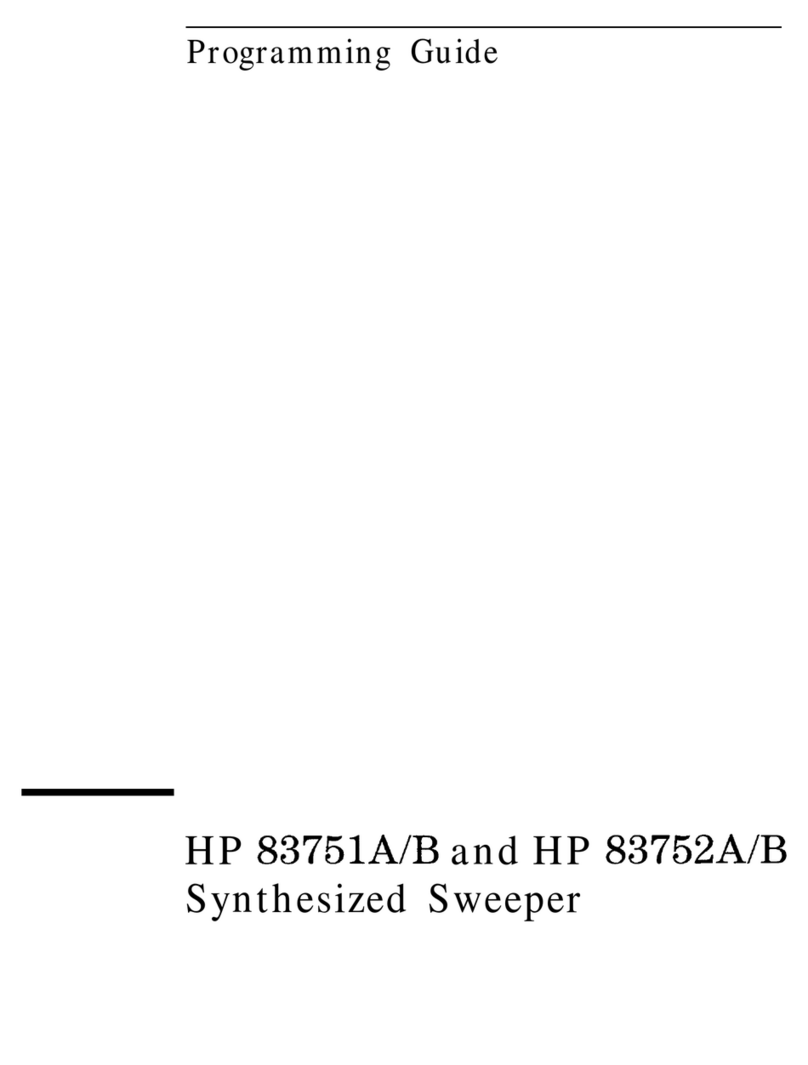
I
-
1. The
(m)
and
(m)
keys
are used to save and subsequently recall
sweeper operating parameters from one of
nine nonvolatile register locations.
2. The line POWER switch turns the sweeper
to either on or standby.
3. The Marker keys allow selection of up to
ten markers to be set anywhere within the
current frequency range. Marker A
measurements are made using these keys as
well.
4. The Modulation keys allow selection of
pulse, AM, or FM modulation.
6. The SWEEP OUT BNC connector provides
voltage proportional to the sweep ranging
from
0
V et the start of a sweep
to’+10
V
at the end of the sweep, regardless of sweep
width.
6. The Automatic
level
Control voltage input
[AK
INI
connector is used as the feedback
path to the sweeper when its RF output
power level is being leveled externally.
7. The Power keys allow selection of the RF
output power level of the sweeper, as well
as other power related functions, such as
Automatic Level Control
IALCI.
The
[ALC
MODE
0)
key is used to select
the method used to regulate the sweeper
output power level. Either internal leveling or
external leveling [with a diode, power meter,
or source module] can be selected. Additional
equipment is required when external leveling
is used.
6. The date entry keys are used to enter
and/or modify various sweeper parameters.
The
@
key cancels all or part of an
erroneous parameter entry before it has been
terminated. The terminator keys
[the
rightmost column of keys) are used to choose
the units for the entered parameter as well
as to terminate the oarameter entry. The
a,
0,
and
(-SIZE)
keys are
used to increase or decrease a parameter in
predetermined steps.
9. The
(RF
ON/OFF) key is used to
toggle the RF output power on and off.
10. The RF OUTPUT connector mates with
a female
APC-3.5mm
precision connector on
standard instruments. The connector metes
with a type-N male connector on option
1ED
instruments. The RF OUTPUT connector will
be found on the rear panel of sweepers with
option
lE4.
11. The front panel knob is used to increase
or decrease active parameters under the
pointers, and is used in manual frequency and
power sweeps.
12. The displays show the current values of
sweeper parameters as well as the status of
many of the sweeper functions. The left-hand
display shows the current frequency status,
whether it be swept or CW. The right-hand
display shows current marker, modulation end
sweep status parameters when they are
selected, as well as the current output power
level. The annunciators that appear below
the parameters are only visible when their
associated function is active. For example, the
STEP annunciator will only be visible when
operating in stepped sweep mode.
13. The Frequency keys are used to set the
various frequency parameters for the sweeper.
Swept frequency selections include Start/Stop,
CWSpan
and Marker 1
+
Marker 2
functions. Continuous Wave
ICWl
mode may
also be selected for- outputting single
frequencies.
14. The
(w)
key is used to put
the instrument into a known state. There are
two preset modes: the factory mode, and a
user-defined mode.
15. The
(m)
key changes the function
of some of the kevs. When vou
mess
the
(m)
key and then press
enother
key,
the sweeper performs the function printed in
blue above the key.
Sweeper rear panel features are depicted and described in detail in Chapter 7,
“Front/Rear Panel” in this manual.
V
-































